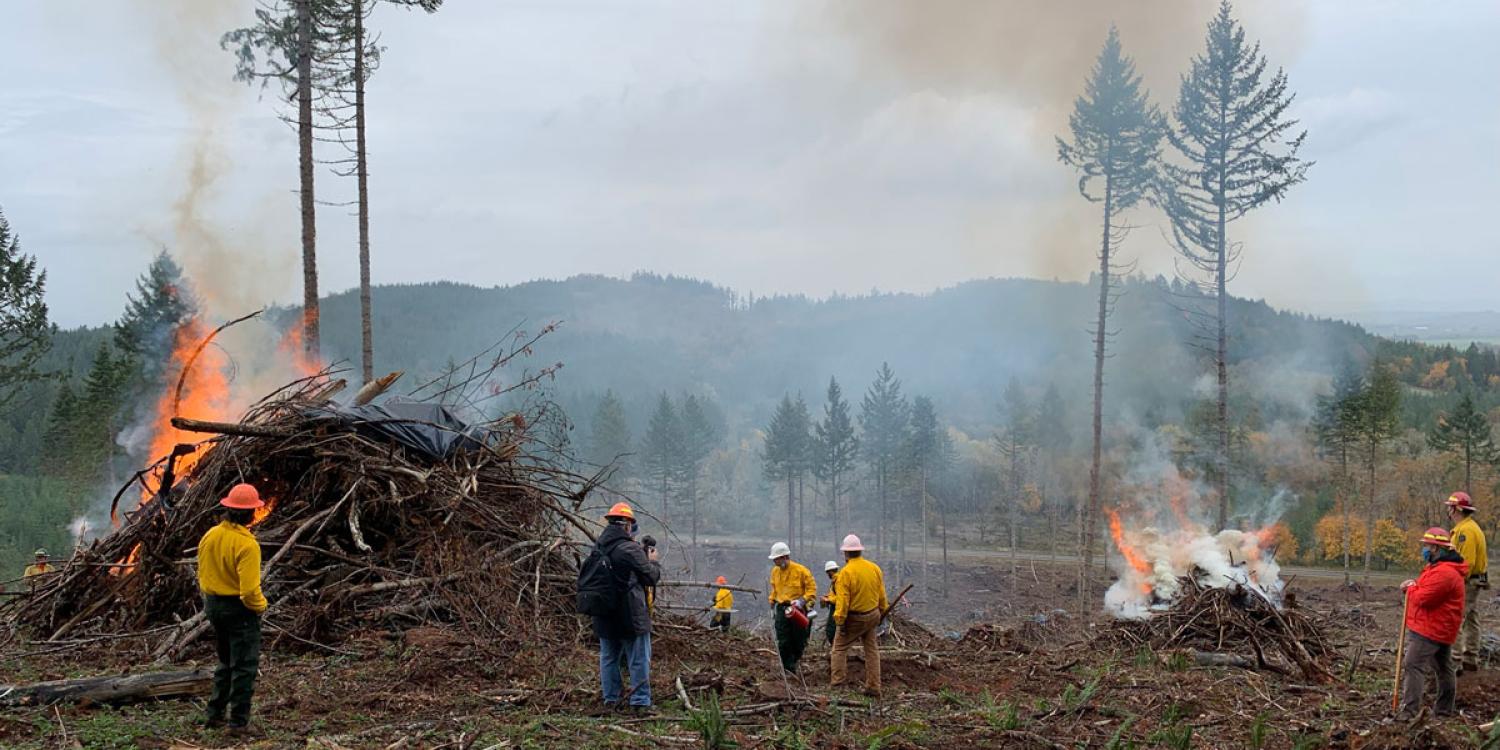
For many Oregonians, fire means smoke, summer anxiety and blackened landscapes. With the increasing number and intensity or wildfires, the need to do something is urgent.
More than 1 million acres of land – many of them forest and wildlands – burned during the highly destructive wildfires of 2020. Clearing brush is essential to mitigating wildfire in Oregon, and one way this can be done is through controlled burning – purposeful lighting of fire under ideal weather conditions, with safeguards in place. But controlled burning can be difficult for private landowners to implement.
Work is being done in the Rogue Valley to change perspectives and offer help through education and outreach by the Oregon State University Extension Service, in partnership with the Rogue Valley Prescribed Burn Association. The organization was formed in 2022 to provide training and build community around the use of this natural resource management tool. The cooperative is composed of landowners and fire professionals.
To help the effort to normalize controlled burns, Chris Adlam, OSU Extension wildland fire specialist, was involved in delivering hands-on learning opportunities, including live-fire trainings, which help participants envision a better future dealing with fire.
A learn-and-burn event, a prescribed fire equipment workshop and a controlled burn planning event reached 70 landowners and residents. Adlam contributed to an international Prescribed Burn Associations conference with participants from as far away as Spain. Informational booths at community fairs helped spread the new knowledge even further. OSU Extension also worked with the Oregon Department of Forestry to establish a cooperative equipment cache that can be shared among local prescribed fire practioners, while adding resources the Oregon Department of Forestry can use for suppression during wildfire season.
This outreach has helped establish a new model for prescribed burning on private lands and has led to broader stakeholder involvement. As an example, two fire departments were involved in the learn-and-burn event, providing training to new recruits and demonstrating support for the use of prescribed fire for wildfire risk reduction.
Adlam and others have given talks in the Columbia River Gorge, southern Oregon coast and the Klamath Basin to share lessons about prescribed burning and inspire action in those locations, too. With OSU Extension’s help, membership in the Rogue Valley Prescribed Burn Association has grown to include landowners, forest workers and wildland firefighters, including several federally qualified burn bosses, who are eager to contribute to community trainings.
The success of the program has also attracted interest from collaboratives and community groups across the region, including Rogue Forest Partners, Umpqua Oaks Partnership and Klamath-Lake Forest Health Partnership.